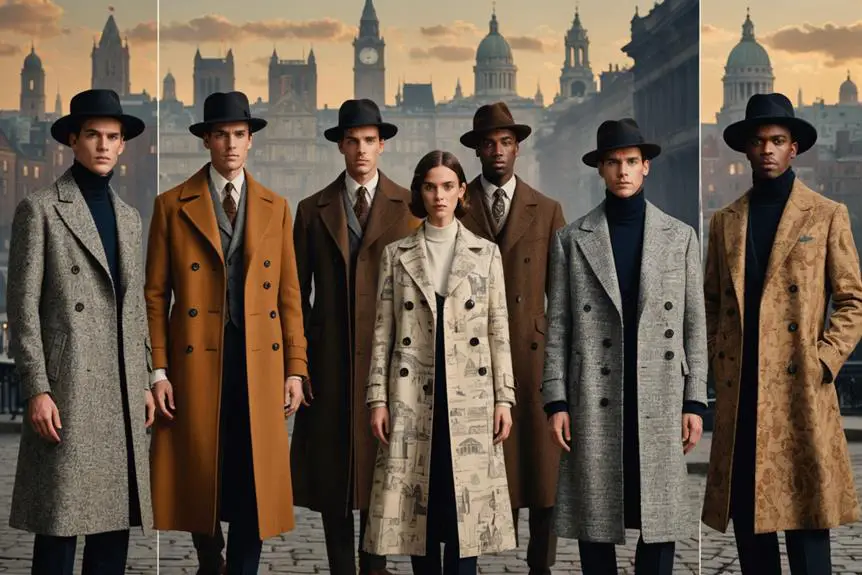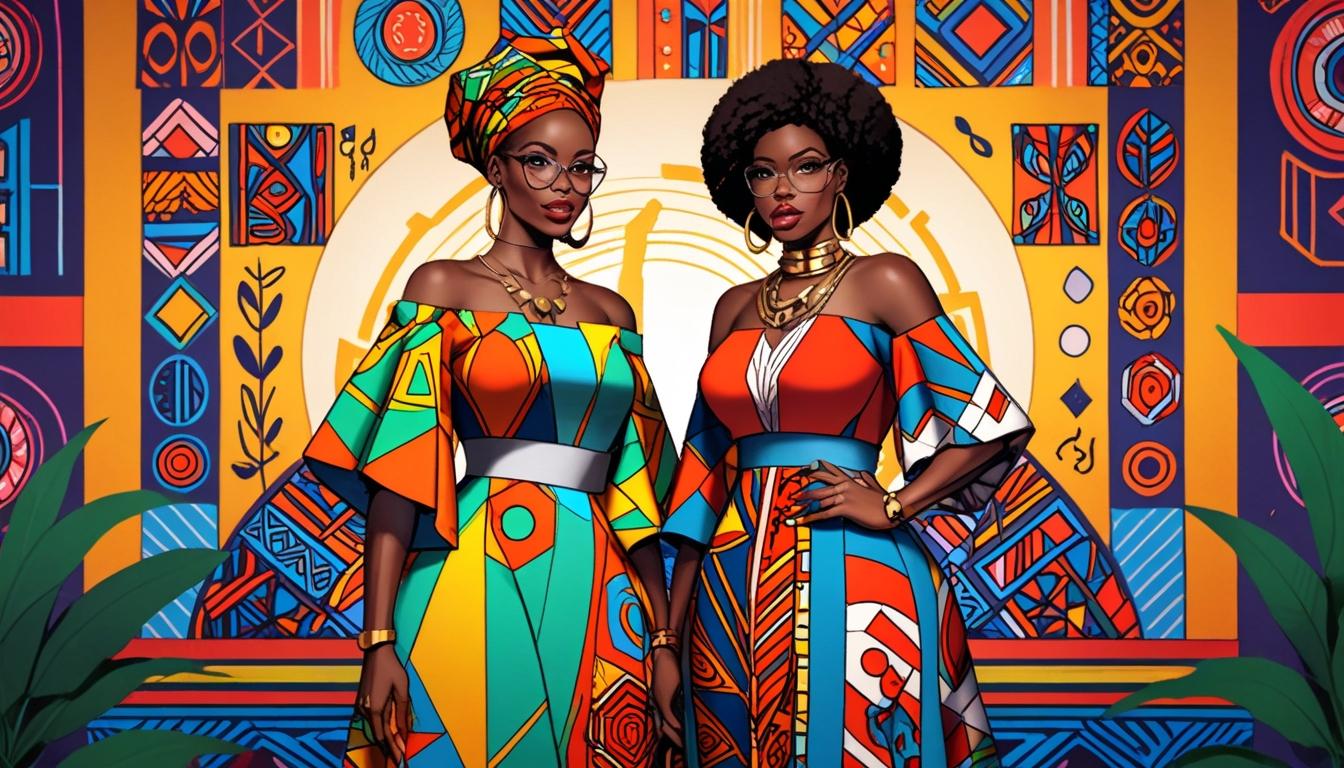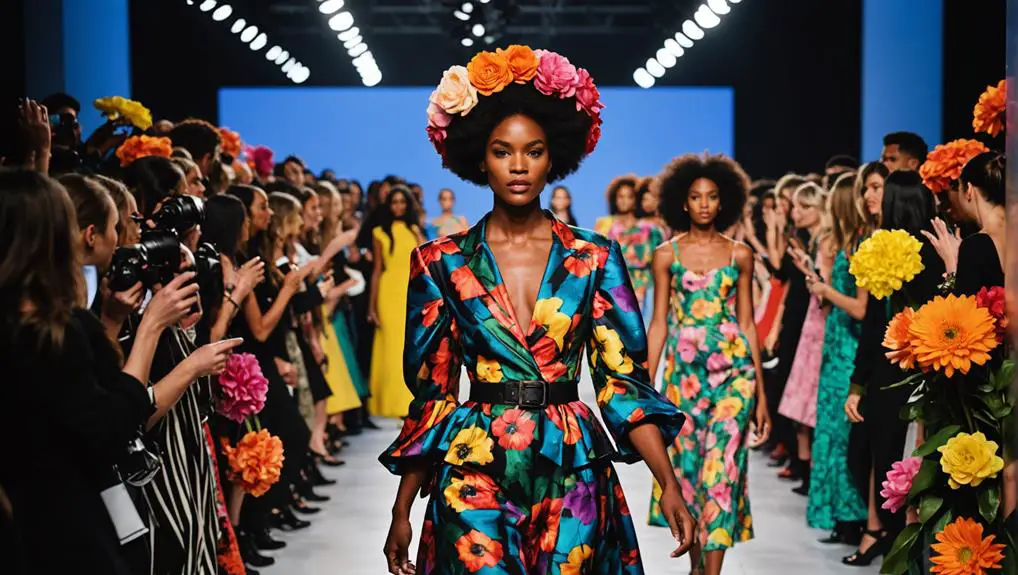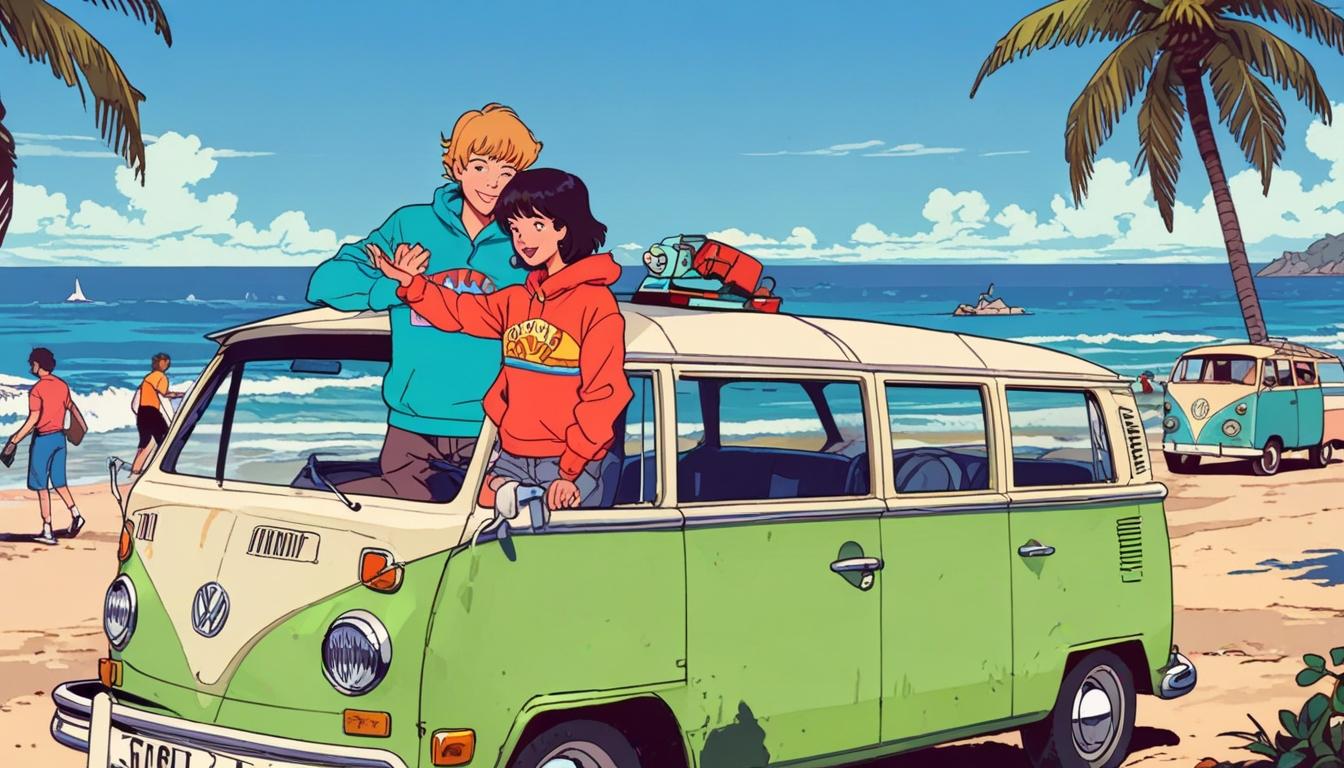Think about the iconic trench coat worn by Humphrey Bogart in "Casablanca"—a piece that not only defines his character but also highlights the overcoat's evolution. You might wonder how this practical garment transformed from medieval necessity to a symbol of style and prestige. As you explore its journey through different centuries, you'll discover the intriguing shifts that influenced its design and significance. What remains to be seen is how these transformations reflect broader cultural changes and the enduring appeal of the overcoat in today's fashion landscape.
Origins of the Overcoat
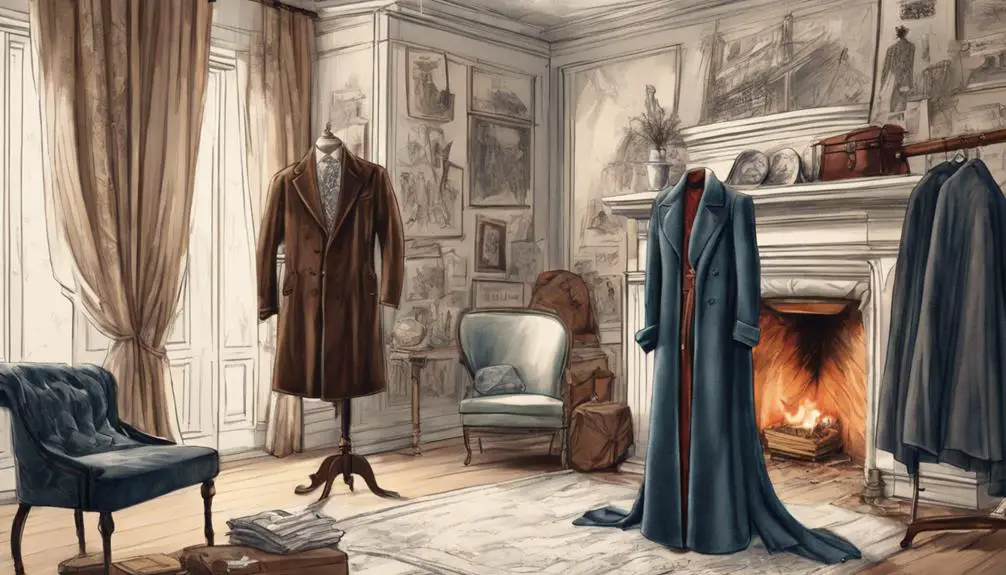
The overcoat has its roots in the Middle Ages, where it was commonly known as an outer coat or great coat and worn by both men and women across Europe. Initially designed for warmth and practicality, this long coat provided essential protection against the elements, making it a staple in the wardrobes of the time. Its design evolved to offer both functionality and style, reflecting the increasing sophistication of fashion in society. As with many garments, the overcoat's construction allowed for potential tailoring to enhance fit and comfort, much like how one might tailor a vintage varsity jacket for a personalized touch.
By the early 1800s, the modern overcoat took shape in England, primarily for military use. This adaptation emphasized durability and warmth, crucial for soldiers facing harsh weather. The overcoat's popularity surged, especially when influential figures, like Queen Victoria, donned these garments, showcasing their acceptance in high society.
As the years progressed, the overcoat shifted from a purely functional piece to a stylish long coat, mirroring societal changes and evolving fashion trends. The post-World War II era saw a significant shift as Hollywood glamorized the overcoat, transforming it into a symbol of sophistication and elegance. Today, the overcoat remains a timeless piece, blending history and style in a way that's both practical and fashionable.
Overcoat in the 19th Century
In the 19th century, the overcoat transformed into a must-have piece for both men and women, blending fashion with practicality in a way that defined the era. You'll notice how men often sported tailored designs with buttons in understated fabrics like tweed, while women embraced vibrant patterns to express their style. This period not only solidified the overcoat's role as essential outerwear but also showcased a fascinating evolution in fabric choices and gender-specific trends, reflecting social status and lifestyle needs.
Fashion and Functionality
Overcoats emerged as essential garments for men in the 19th century, blending practicality with style. Tailored to perfection, these overcoats typically reached below the knees, providing warmth and sophistication during an era of changing social dynamics. You'd notice that men favored plainer fabrics like tweed, while women opted for more patterned materials, reflecting their social status and fashion preferences.
The versatility of overcoats was impressive, serving not just as a shield against the elements but also as a fashion statement. They adapted seamlessly to the needs of various social classes, showcasing craftsmanship through precise tailoring and quality materials. Buttons adorned these stylish garments, emphasizing their elegant designs and practical features.
As the 19th century progressed, overcoats became symbols of sophistication, representing a significant shift in fashion. They embodied the ideals of practicality and elegance, appealing to men across different societal ranks. With their ability to elevate an outfit while providing comfort, it's no wonder that overcoats held a prominent place in men's wardrobes. So, when you think of this era, remember how overcoats beautifully bridged the gap between fashion and functionality!
Gender Differences in Styles
Frequently, the distinctions between men's and women's overcoat styles in the 19th century mirrored broader societal norms and expectations. Men's overcoats, typically longer and reaching below the knees, emphasized practicality and authority, reflecting their roles in a rapidly industrializing society. They often favored plainer fabrics like tweed, designed with tailored silhouettes and buttons, which conveyed professionalism. In contrast, women's overcoats embraced shorter lengths and more decorative elements, showcasing fashion and elegance.
While men's overcoats served as versatile everyday garments, women's styles were often reserved for formal occasions and social events, highlighting femininity and personal taste. The history of the overcoat reveals how these garments not only protected against the elements but also communicated social status. Women's choices leaned towards patterned materials, allowing for creativity and expression, whereas men's selections prioritized functionality.
Ultimately, these gender differences in overcoat styles not only illustrate personal expression but also reflect the evolving roles of men and women in society during the 19th century. So, as you explore the rich tapestry of overcoat history, you'll discover how each style tells a story about its wearer's place in the world.
Fabric Choices and Trends
Reflecting the diverse social fabric of the 19th century, fabric choices for overcoats were as much about identity as they were about functionality. You'd find that men typically opted for plainer fabrics like tweed, emphasizing practicality, while women gravitated toward patterned materials that showcased their flair for fashion. The distinction in fabric choices often highlighted one's social status. Here are some key trends:
- Tweed for Men: A durable, utilitarian choice that reflected a no-nonsense approach to style.
- Patterns for Women: Decorative fabrics became a canvas for expressing individuality and taste.
- Luxurious Materials: Wealthier individuals chose high-quality fabrics, elevating their overcoats to symbols of status.
- Tailored Designs: The shift toward tailored styles, complete with buttons, marked social distinctions and functional purposes.
Ultimately, these fabric choices weren't just about warmth; they were essential to how people presented themselves to the world. Overcoats evolved from mere functional garments to bold statements of identity, making them a crucial part of 19th-century fashion. It's fascinating how fabric trends can reveal so much about society's values and aspirations!
Overcoat in the 20th Century
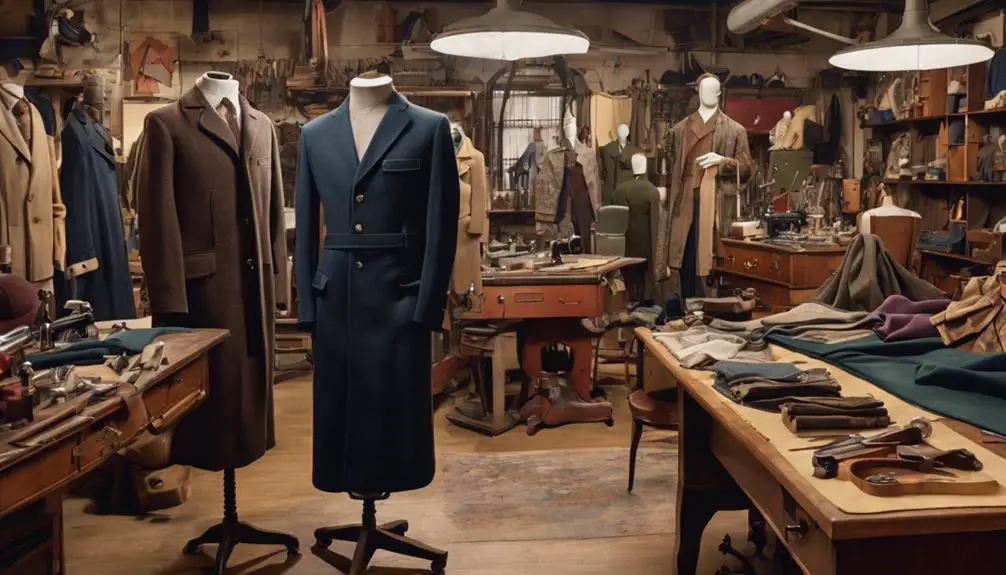
The 20th century witnessed the evolution of the overcoat, with its popularity peaking in various decades as societal norms shifted and different subcultures emerged. After World War I, overcoats gained traction, influenced by soldiers adopting trench coats that emphasized practicality and durability. You might have noticed how these coats became symbols of resilience and sophistication, much like the classic Barbour jackets that have transcended their rural utility to become fashionable urban wear. By the 1950s, however, the military's influence waned, and fashion leaned towards more casual and functional outerwear, reflecting a changing society. But don't count the overcoat out just yet! The 1960s saw the Teddy Boy subculture embrace long overcoats inspired by Edwardian fashion, sparking a revival among the youth.
In the 1970s, styles like the navy or black Crombie coat became favorites among skinheads and suedeheads, showcasing how versatile overcoats can be. The 1980s brought yet another transformation, as oversized silhouettes reigned supreme, aligning with the power dressing trend that emphasized boldness and strength. Throughout the century, overcoats are made from various materials, allowing them to adapt and thrive in different cultural contexts, proving their timeless appeal, similar to the vintage elements found in classic Barbour jackets that highlight unique craftsmanship.
Overcoat in the 21st Century
As we move into the 21st century, overcoats have solidified their place in modern wardrobes, appealing to a diverse audience across all genders. Today, you can find long overcoats in a variety of styles, colors, and materials that cater to different tastes and lifestyles. The evolution of fashion has made overcoats more versatile, shifting from strictly formal attire to casual wear, giving you plenty of options for every occasion. Wool coats offer unique designs that combine warmth and elegance, making them a timeless choice.
Here are four exciting trends in 21st-century overcoats:
- Material Variety: Popular fabrics like wool, cashmere blends, and cotton twill offer both comfort and warmth.
- Technological Influence: Innovative designs are emerging, thanks to advancements in fashion technology, adapting to your active lifestyle.
- Sustainability: More consumers are choosing ethically produced options, reflecting a growing concern for the environment.
- Gender Inclusivity: Overcoats now embrace all genders, making them a staple for everyone.
With these trends, the long overcoat not only serves as a practical piece but also enhances your personal style. Embrace the diversity and express your individuality with this timeless garment!
Overcoat in Popular Culture
The overcoat isn't just a piece of clothing; it's a powerful symbol of sophistication and status that has graced the shoulders of influential figures throughout history. From literary characters exuding mystery to iconic personalities like Winston Churchill and Cary Grant who made it a staple of high society, the overcoat has woven itself into the fabric of popular culture. Today, you'll find it reinvented on modern screens and runways, showcasing its timeless versatility and continued relevance in fashion and media.
Symbol of Sophistication
Often draped over the shoulders of icons like Winston Churchill and Cary Grant, the overcoat has become synonymous with sophistication and high society. Its presence in popular culture reinforces this image, transforming it from a mere functional piece to a statement of power and elegance. Here's why the overcoat remains a symbol of sophistication:
- Cultural Representation: You'll often see overcoats featured in literature, films, and music, highlighting their stylish and authoritative nature.
- Hollywood Glamour: Post-World War II, the overcoat gained fame as a fashion statement, thanks to its portrayal in classic films, elevating its status.
- Luxury Brands: Expensive brands known for high-quality overcoats reflect wealth and prestige, making wearers appear both stylish and influential.
- Versatility: The adaptability of overcoats allows them to fit seamlessly into various fashion subcultures, from the Teddy Boys to today's fashion enthusiasts, ensuring their relevance across generations.
Whether paired with sleek trench coats or tailored suits, the overcoat remains a timeless piece, embodying sophistication and style in every setting. So, when you slip into one, remember you're embracing a legacy of elegance!
Influential Cultural Icons
Icons throughout history have embraced the overcoat, further cementing its status in popular culture. This timeless garment represents sophistication and power, worn by influential figures like Winston Churchill during World War II. His iconic overcoat became a symbol of British leadership, reflecting resilience during challenging times.
In the 1950s, James Dean rocked the overcoat, embodying rebellion and youth culture. His style signified defiance, making the overcoat a staple for those seeking to make a statement. Meanwhile, Cary Grant added a touch of classic Hollywood elegance, influencing men's fashion and solidifying the overcoat as a must-have in every man's wardrobe.
Fast forward to modern cinema, where Daniel Craig's portrayal of James Bond reignited the overcoat's sophisticated appeal. As he donned this versatile piece in both formal and casual settings, audiences were reminded of its timeless charm.
From literature to film and music, the overcoat has been a recurring theme, reinforcing its cultural significance. As you explore the history of the overcoat, you'll discover how these influential cultural icons helped shape its legacy, making it an enduring symbol of style and status.
Fashion and Media Representation
Overcoats have graced the silver screen and pages of literature, serving as powerful symbols of sophistication and authority. Throughout history, they've been worn by influential figures, reinforcing their status as a fashion staple. From the Regency period to modern cinema, overcoats continue to embody wealth and power, showcasing their versatility across various contexts.
Consider these notable representations of the overcoat in popular culture:
- Winston Churchill – His iconic overcoat became synonymous with leadership and resilience during turbulent times.
- Cary Grant – Often seen in stylish overcoats, he represented elegance and charm in classic films.
- Film Noir – Characters draped in overcoats often embody mystery and intrigue, enhancing the genre's dramatic flair.
- Contemporary Cinema – Modern protagonists wear overcoats to express rebellion or sophistication, proving the garment's enduring appeal.
The overcoat's presence in literature, film, and music has evolved, but it consistently reflects quality and prestige. Whether in a historical drama or a contemporary thriller, the overcoat remains a powerful garment, symbolizing authority while enthralling audiences across generations.
Key Overcoat Styles
When it comes to choosing the right overcoat style, a variety of options can elevate your wardrobe. One timeless classic is the Chesterfield coat, introduced in the 1840s, featuring formal dark fabric and a luxurious velvet collar—ideal for those formal occasions. If you're looking for something more casual, the peacoat, a shorter, double-breasted design often made of wool, adds a touch of sailor-inspired charm to your outfits.
For colder weather, consider the practical yet stylish duffle coat, distinguished by its toggle fastenings and cozy hood. If you want protection against rain and wind, a trench coat is your go-to; its military origins guarantee it's both functional and fashionable, typically featuring a belted waist for that polished look.
Lastly, oversized coats have made a splash in modern fashion, providing a relaxed fit that allows for comfortable layering while still making a bold statement. Each coat style offers unique benefits, so whether you lean towards a long overcoat for elegance or opt for a trendy oversized piece, you're certain to enhance your style effortlessly.
Iconic Overcoat Figures
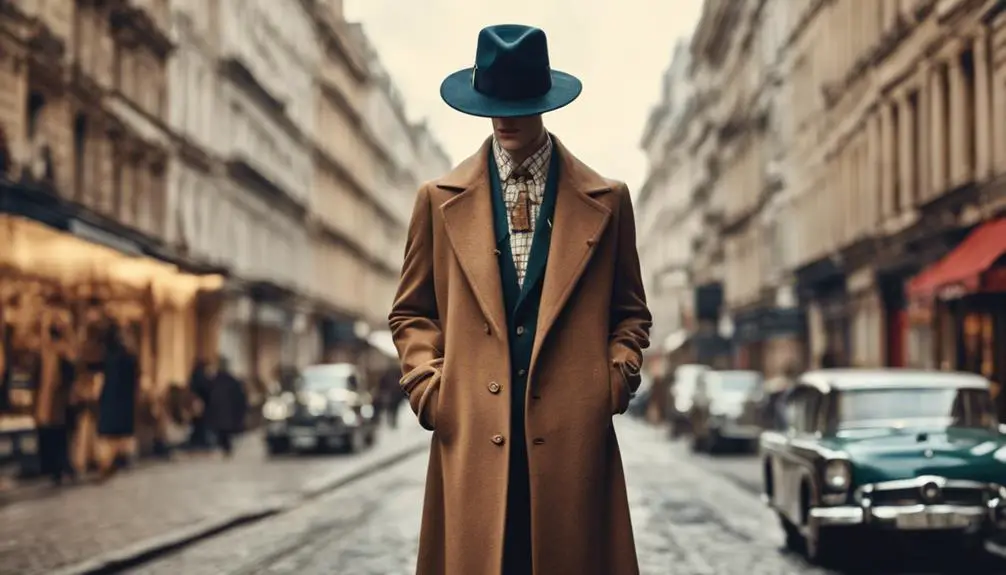
Throughout history, certain figures have not just worn overcoats but have defined their essence in fashion and culture. These iconic personalities have made their mark, showcasing how the overcoat can elevate one's presence. Here are four standout figures who've become synonymous with stylish overcoats:
- Winston Churchill wore a British Warm overcoat, symbolizing British leadership during World War II, making it a staple of patriotic fashion.
- James Dean popularized the overcoat in the 1950s, embodying youthful rebellion and cool sophistication, forever changing how we perceive this garment.
- Cary Grant epitomized classic Hollywood elegance with tailored overcoats in his films, setting the standard for men's fashion and inspiring countless styles.
- Daniel Craig, as James Bond, has redefined modern sophistication, often flaunting sleek overcoat designs, including the timeless Chesterfield coat and single vent styles that scream luxury.
These figures not only wore overcoats but also transformed them into powerful symbols of their respective eras, influencing trends and inspiring generations to embrace this classic outerwear piece. Their legacies continue to shape the evolution of the overcoat today.
Modern Overcoat Trends
In today's fashion landscape, the evolution of the overcoat showcases a dynamic blend of styles and materials that cater to diverse tastes. Modern overcoat trends reflect a mix of tailored, oversized, and casual designs, appealing to both men and women alike. You'll find that popular materials like wool, cashmere blends, and cotton twill are chosen not only for their warmth and comfort but also for their stylish appearance.
With the rise of sustainable fashion, eco-friendly fabrics and production methods are becoming essential in overcoat design, emphasizing consumers' desire for environmentally conscious choices. Technology plays a significant role too, introducing innovative features such as water-resistant fabrics and breathable materials that help you stay comfortable, even in harsh weather conditions.
Color trends have evolved as well, moving away from traditional dark tones to embrace lighter shades and bold patterns. This shift allows for greater versatility and personal expression in your outerwear choices. Whether you prefer a classic silhouette or a trendy statement piece, modern overcoat trends provide options that not only protect you from the elements but also elevate your style game.
Choosing the Right Overcoat
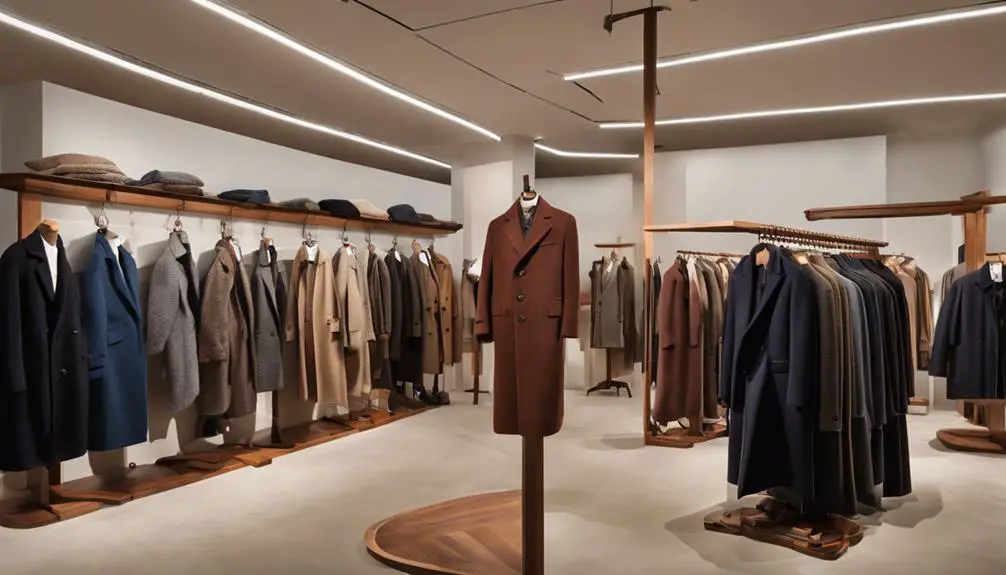
Selecting the right overcoat hinges on a few key factors that can enhance both your comfort and style. By considering these elements, you can choose an overcoat that not only looks great but also serves its purpose effectively.
- Length: Traditional styles usually reach below the knee, providing warmth and adequate coverage during colder months.
- Fabric: Opt for high-quality materials like wool or cashmere blends. These fabrics offer excellent insulation and durability, ensuring your coat lasts through the seasons.
- Fit: A tailored overcoat can enhance your silhouette, while looser styles provide the comfort and versatility ideal for layering over form-fitting clothes.
- Color: Choose a shade that complements your wardrobe. Classic colors like black, navy, and beige offer versatility, while lighter hues can make a stylish statement.
Don't overlook design features, such as lapel type, pocket style, and vent options, which can impact both the aesthetic and functionality of your overcoat. By keeping these tips in mind, you'll find an overcoat that not only meets your needs but also elevates your overall look. Happy hunting!
Frequently Asked Questions
What Is the Origin of the Overcoat?
Isn't it fascinating how fashion evolves? The overcoat's origins lie in the Middle Ages, where its material significance reflected both practicality and status, paving the way for its transformation into a stylish staple in modern wardrobes.
What Is the Symbolism of the Overcoat?
The overcoat's symbolism lies in its dual role as a fashion statement and its cultural significance. When you wear one, you're not just keeping warm; you're also projecting elegance, sophistication, and authority in your presence.
What Is the Moral Lesson of the Overcoat?
The moral lesson of the overcoat emphasizes that true value lies not in social status or material wealth but in personal identity and authenticity. Wear what reflects who you are, not just what's expected.
What Does the Ghost in the Overcoat Signify?
The ghost in the overcoat signifies unresolved issues and lingering traditions. You see its design and materials reflect past authority, reminding you of the weight of history and the contrast with modern, casual styles.
